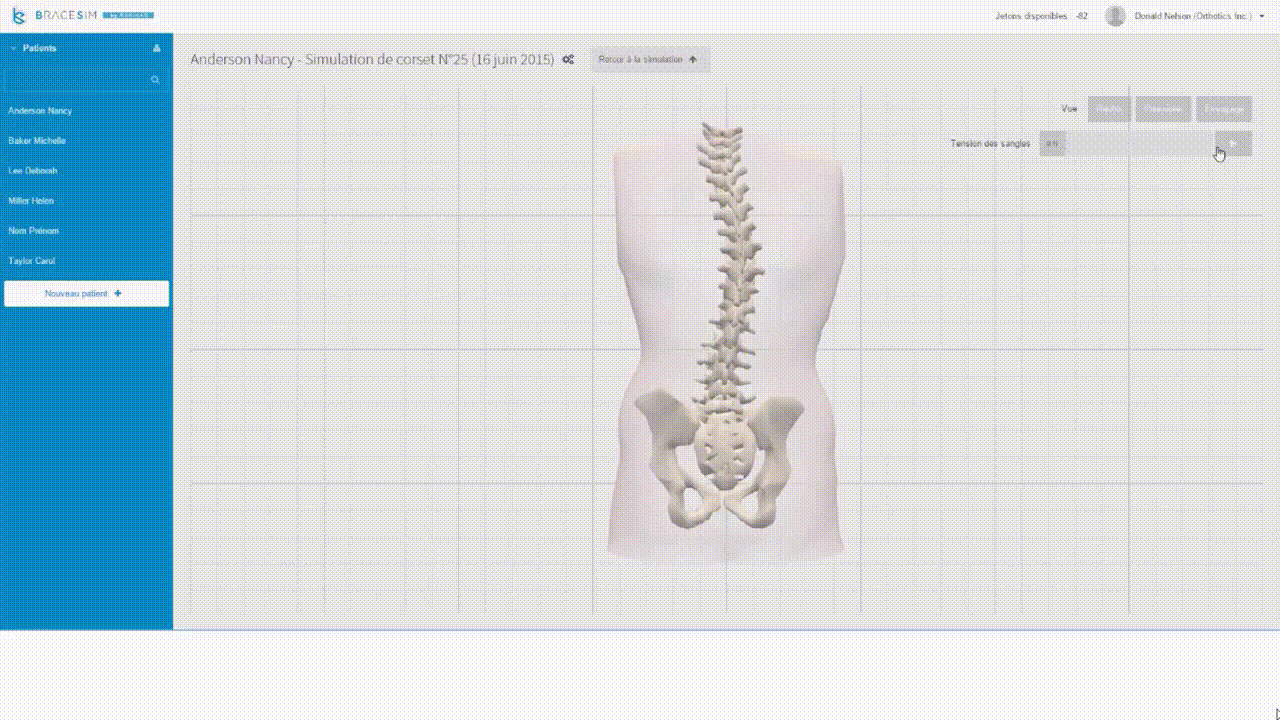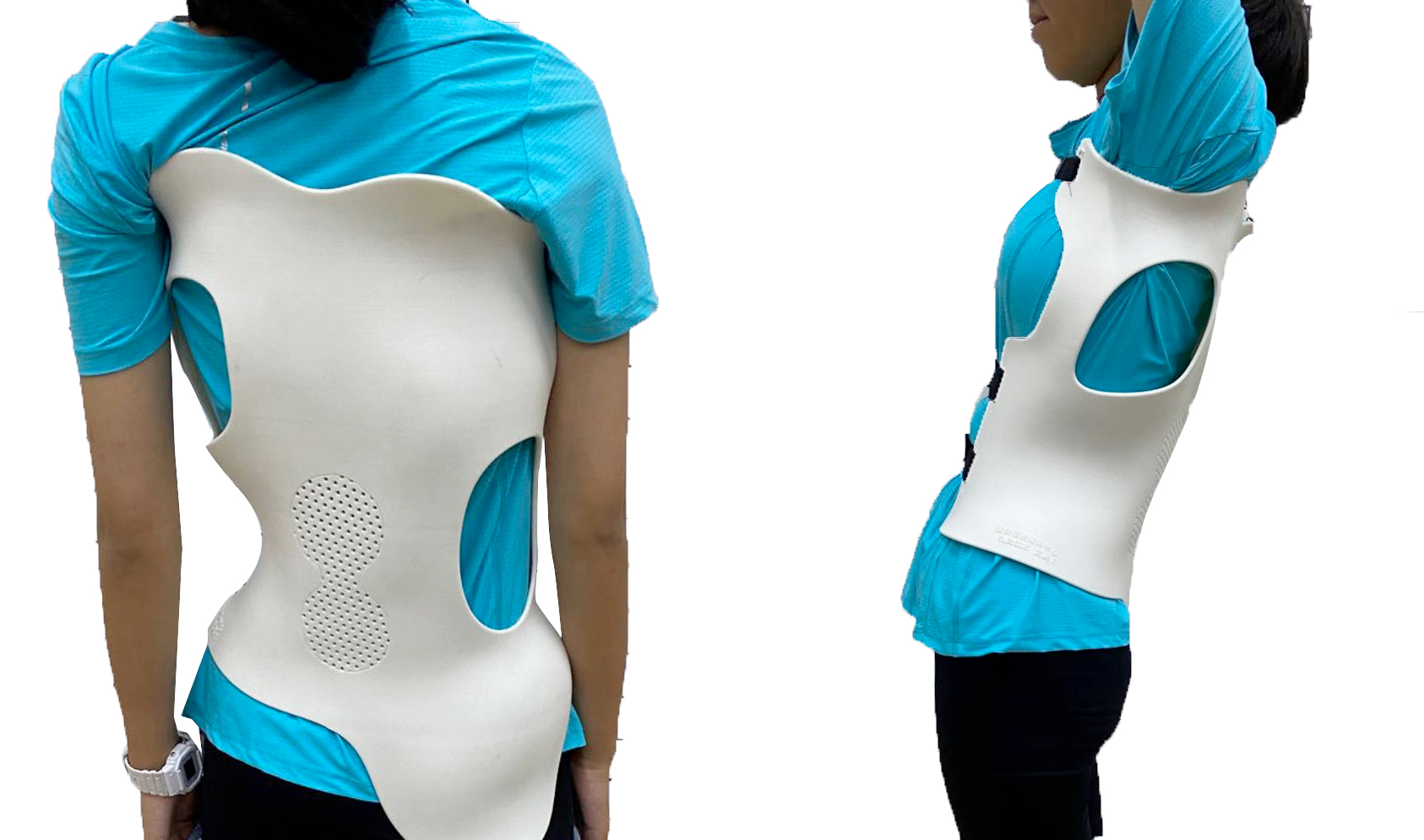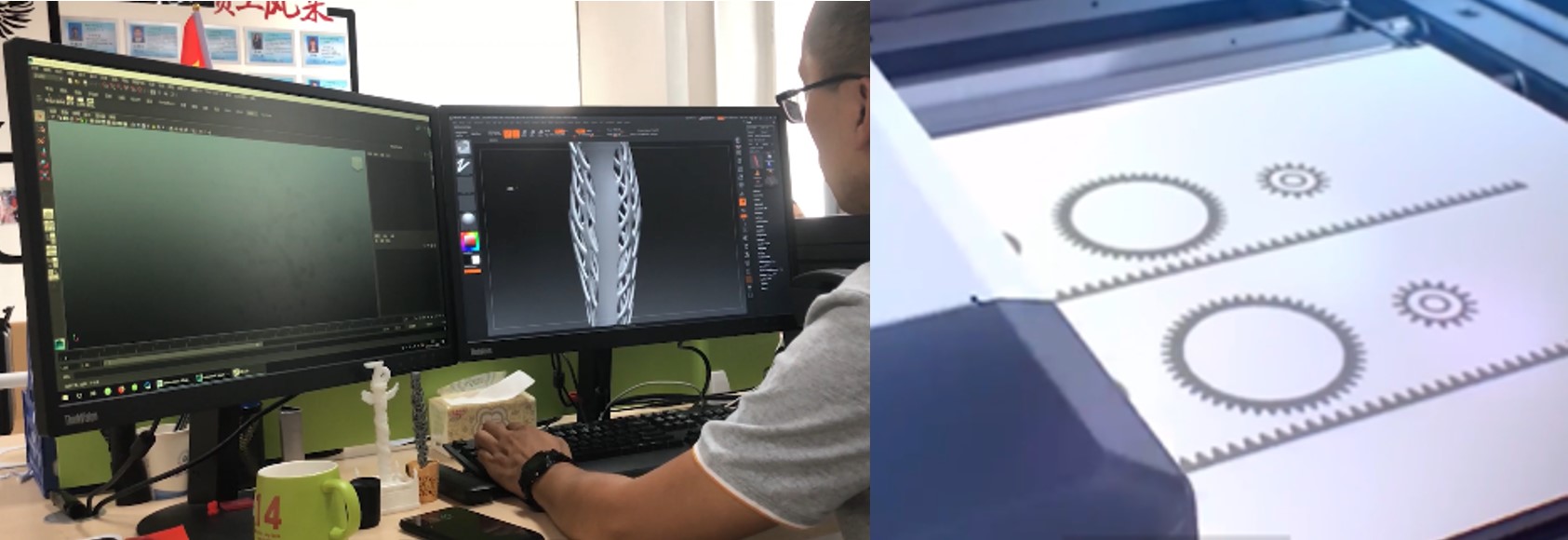Recently, an experiment applying iReal 3D scanner to facial repair and reshaping was carried out in Manchester General Hospital.
iReal 3D scanner has also been introduced into spine corrective treatment and prosthesis customization process. 3D body scanning has demonstrated great potential for application in the healthcare field, as there has always been a demand for acquiring patients’ physical data for diagnostic and treatment purposes in clinical practices. The X-ray, CT, Magnetic Resonance Imaging (MRI) are all used to form 3D images of the inside of patients. By comparison, 3D body scanning is designed for collecting data concerning outside of the human body. The 3D data can be applied in the customization of medical products for patients such as artificial limbs, prostheses, rehabilitation protectors, and orthopedic support.
When collecting body 3D data, what people care about most is whether the scanning is safe, comfortable, non-contact, effective and precise. Safety and comfortableness are two prerequisites for applying 3D scanning to the human body, because no technology that can’t make sure about absolute safety can be applied to the human body.
Second of all, the human body features a complicated outline and great elasticity. Medical 3D scanning usually demands patients to expose the target parts for diagnostic purposes. Moreover, some patients bear severe trauma. All those factors decide non-contact measurement is the best way for body data acquisition.
Last but not least, efficiency and precision are necessary conditions in providing diagnostic and treatment services for patients. High efficiency aims to relieve patients’ suffering and precision refers to consistent scanning results, which realizes customized artificial limbs, prosthesis and rehabilitation protectors fitted patients’ individual characteristics in a seamless way.
The iReal body 3D scanner adopts infrared VCSEL structured light that will do no harm when people using it. The Infrared light source is invisible so as to make people comfortable. During the scanning, it is unnecessary to attach markers, whereas its high precision warrants accurate scanning results. The iReal 3D color scanner supports light-free scanning and dark scanning and automatically removes overlaying caused by body movement. The scanned data can be imported into orthopedic design software and a 3D printer, perfectly meeting all the requirements concerning human body 3D scanning in clinical practice.
Case 1 Facial repair and reshaping in Manchester Manchester General Hospital
Compared with other systems we have tried, we found iReal body 3D scanner met all requirements and applications within the hospital settings, Olive Burley said, a rehabilitation expert in Manchester General Hospital when assessing the performance of iReal 3D scanner in facial repair and reshaping experiment.
Within several minutes, iReal finishes a high-quality scanning of such details as eyebrows, fine lines, wrinkles and eyes with realistic texture capturing. Then, the related data are imported into specialized design software so that patients can get customized prostheses. With rhinoplasty as an example, 3D scanning is scheduled before the operation to determine customized prostheses and generate a 3D implantation effect for communicating with the patient. Besides, the operation plan of the case can be saved.

When the operation is done, the real data of the patient are put into comparison with the operation plan. Such a digital facial reshaping procedure appears both innovative and practical in the clinical field, which brings in more refined and accurate rhinoplasty. Considering the performance on facial repair and reshaping, “we are thinking about applying iReal to the repair and reshaping of other body parts. ” Olive Burley stated.
Casse 2 Spine correction
Kunming Digital Orthopedics Medical Technology Center exerted iReal 3D scanner in their scoliosis correction procedures. Deformity of the spinal column is one of the common diseases affecting adolescent health. An orthosis is the most effective way of conservative treatment for moderate idiopathic scoliosis. At present, scoliosis corrective Orthosis is mostly artificially made demanding a long manufacturing process. By contrast, a combination of iReal 3D scanner with 3D printer makes the orthosis production more efficient. Furthermore, the invisible light scanning could reduce the psychological discomfort of patients. This pattern is especially humane for patients suffering from special psychological diseases.
3D scanning-based spinal orthosis manufacturing is roughly made of the following steps: acquire medical images of patients (X-ray, CT, etc.) → record patient 3D data → conduct analytic planning with medical images and 3D scanning data (by determining target angle for correction and compensation and calculating corresponding pressure as per the displacement) → design orthosis through software (pressing, stretching and smoothing) → design model to simulate fitting with X-ray and mathematic models→ print orthosis by 3D printing→ polish the orthosis and fix fasteners→ wear the orthosis and do some adjustment as necessary.
 3D body scanning by iReal 3D scanner
3D body scanning by iReal 3D scanner
 Medical image and 3D stl data
Medical image and 3D stl data

Full-length X-ray measurement to determine the outer dimensions of the orthosis; Accurate matching of X-ray with 3D scanning data.
Design corrective orthosis with 3D software
Simulate matching of the designed model with X-ray images and 3D scanning model.
 Wearing 3D printed orthosis is more ergonomic than the conventional one due to its high fitting ratio and improved comfort
Wearing 3D printed orthosis is more ergonomic than the conventional one due to its high fitting ratio and improved comfort
Case 3 Prosthesis application
The prosthesis is a field in which the application of 3D scanning becomes quite mature. The 3D Printing and Intelligent Manufacturing Research Center, Dongguan University of Technology has developed a whole set of 3D prosthesis solutions with iReal 3D scanner: scan and get 3D data of patient’s stump first and then scan all the components of common prosthesis, try assembling data from the two group of 3D data; apply FEA software to analyze the static and dynamic stress ranges of the stump and lower limb’s force line, determine the design scheme, and print prosthesis receiving cavity with 3D printer. This 3D solution provides more scientific and individualized treatment and rehabilitation plans for medical workers in serving their patients.
 Scan the stump with iReal 3D scanner in a non-contact way to acquire 3D data
Scan the stump with iReal 3D scanner in a non-contact way to acquire 3D data
 Design joint structure and complete 3D printing with high-performance composite material
Design joint structure and complete 3D printing with high-performance composite material
 Print finished prosthesis with nylon and assemble the bionic joint device
Print finished prosthesis with nylon and assemble the bionic joint device
Case 4 Comprehensive 3D solution for medical rehabilitation
What ScanTech offers is not limited to 3D scanning service. We pay more attention to the secondary design after the scanning. This is also what our clients care most. 3D data can be seamlessly imported into 3D printer, design reshaping software, and carving machine in order to provide an integrated solution for rehabilitation clients.
We use a common design software Rodin4D as an example below to demonstrate the use process. Rodin4D is a CAD-CAM system that is specially used to reshape prosthesis and orthotics designed and developed by prosthetists and orthosis. It can conduct 3D model design based on the data acquired by 3D scanner. Within the software, there are some fundamental types of prostheses and orthotics. Reference lines of internal human body 3D models can be re-aligned and -adjusted. There are a lot of reshaping methods, including radius, copy, combination, translation, twist, bend, stretch, mirror, balance, reflect, prosthesis dimensions, orthotic dimensions, region, regional smoothing, smooth vertical cutting, turnover, horizontal cutting, and tool import. In addition, more than 25 simulating and reshaping tools are embedded such as plaster file, spatula, chopper, and sandpaper, which are quite similar to those in actual practice.
The human body is really complicated. Being able to acquire fine and complete 3D data within a short period of time, 3D scanning stands out in facilitating the manufacturing of artificial limbs, prosthesis, rehabilitation protectors, and corrective braces. It is both accurately matching and satisfying in meeting patients’ individual demands. Of course, 3D scanning is also under exploration in other medical branches like disease evaluation, fundamental research, and clinical teaching. We have every reason to believe it will make a greater contribution to medicine and provide more efficient and precise treatment regimens for patients with constant progress in science and technology.
For more case of health care, please read below:
What A 3D Body Scanner Can Do?

